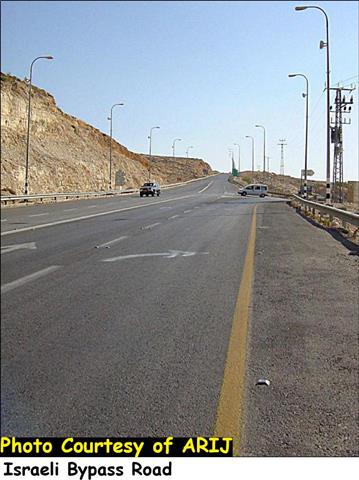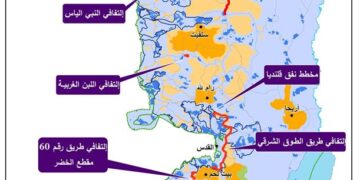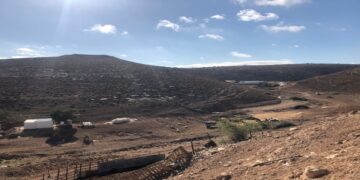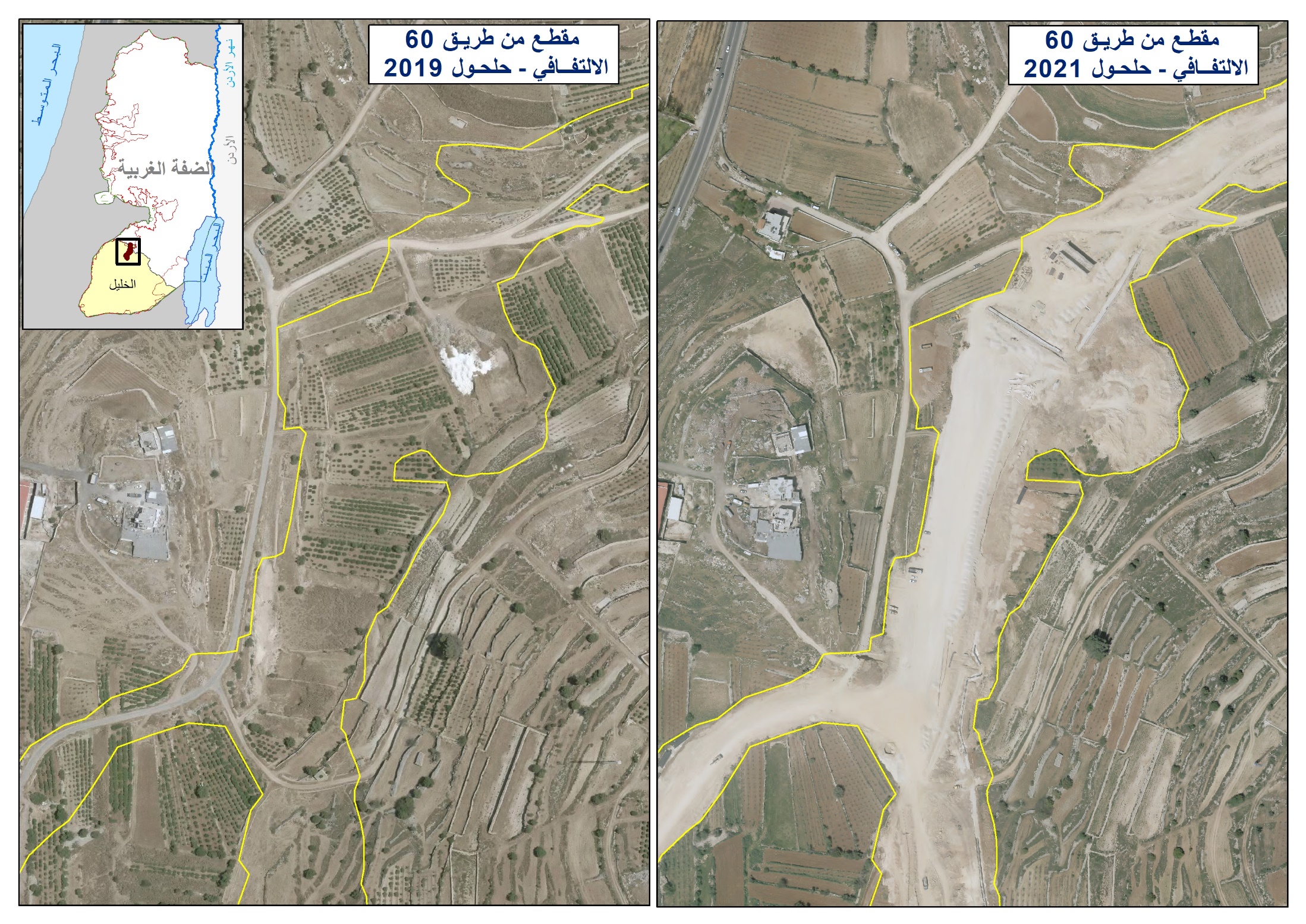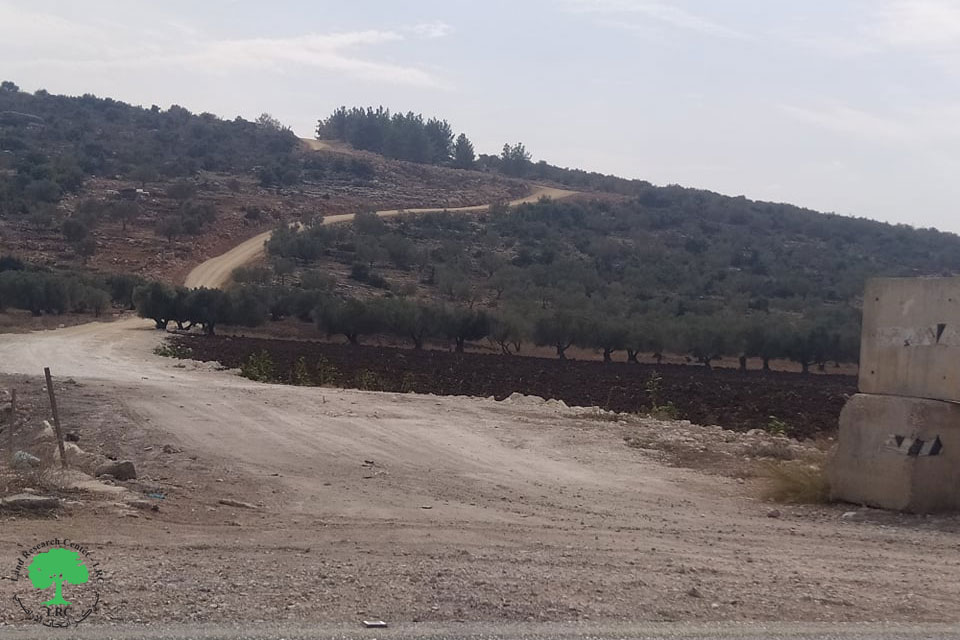Israel has set a new world record on the number of breaches committed by a single State of International Law & the Fourth Geneva Convention of 1949. The State of Israel's persistence in ignoring its duties as an occupying power of the Palestinian territories has drove it to bypass the international community's willingness to achieve a just peace between Palestinians and Israelis.
Immediately after occupying the West Bank & Gaza Strip in 1967, Israel commenced a strategy to dissect and fragment the Occupied Palestinian Territories with a complex network of bypass roads falling completely under its jurisdiction in terms of utilization rights. At first, these roads were communal, allowing Palestinians access; but occasionally some of the roads were restricted by Israeli authorities under the pretext of security. This became a constant issue after 1987 when the first Palestinian Intifada for independence began.
Israeli bypass road
Since the first Palestinian Intifada in 1987, Israel has restricted the movement of the Palestinian people in the occupied territories by various methods. Israeli authorities have constantly referred to ''security measures'' in implementing these methods, in spite of the fact that the practices violate the right to freedom of movement of Palestinians as codified in the ICCPR (International Covenant on Civil and Political Rights), to which Israel is party. During the past 4 years of the second Intifada, Israel elevated restrictions on freedom of movement to an unprecedented level. These restrictions are a clear violation of Israel's obligations under international human rights and humanitarian law to protect freedom of movement and not to discriminate against or inflict collective punishment on the population of an occupied territory.
Is it legal to deny Palestinians access to use the roads?
According to Article 12 of the International Covenant on Civil and Political Rights, ''Everyone lawfully within the territory of a State shall, within that territory, have the right to liberty of movement and freedom to choose his residence''. In 1998, prior to the outbreak of the current Intifada, the Human Rights Committee, and the UN body of experts that monitors states' compliance with the Covenant, expressed concern about the grave consequences of restrictions on movement in the Occupied Territories committed by Israel.
How did Israel do it?
The term ''Israeli bypass road'' was first utilized during the Oslo negotiations. The Israeli bypass roads in the Occupied Palestinian Territories were planned to facilitate the existence of illegal Israeli settlements in the West Bank & Gaza. Many of the bypass roads can only be used by Israeli vehicles, contributing to the Apartheid-like situation, such as that previously existed in South Africa.
The new Israeli vision to control the West Bank rests in the existence of this road system according to Israeli plans to maintain jurisdiction over the Occupied Palestinian Territories. The newly proposed road system aims to preserve the status quo of Israeli occupation in the West Bank, which will put an end to the possibility of an independent Palestinian State.
Along with the road system, Israel's Segregation Wall will isolate approximately 47% of the West Bank total area allowing Israel to maintain the existence of over 435,000 illegal Israeli settlers in the occupied West Bank; including East Jerusalem.
How will Israeli legitimize its plan?
Israel has paved the road to implement its scheme to end the Palestinian dream of an independent viable Palestinian State with geographical contiguity when it built the settlements, the bypass roads and now the Segregation Wall. The final act of the Israeli plot is to maintain its control over 500 Km of roads distributed systematically in a way that will segregate the West Bank into dozen of cantons with no physical contiguity. An additional 18 tunnels and under ground passages will be constructed to buttress the scheme which according to Israel's hopes will be financially adopted by the guardians of the peace process; the European Union and the United States who renounced this Israeli plan some time ago, but apparently may have a change of heart at this time.
The roads planned to be rehabilitated in addition to the proposed new roads and the planned tunnels attempt to create two networks of roads, one Israeli and one Palestinian. However, the Israeli network is a continuous road network that links together all Israeli settlements located in the Palestinian Territories, while the Palestinian network is fractured and unsustainable. New roads and tunnels will result in segregating the Palestinian communities into Ghettos with only limited access through the proposed 18 tunnels. See Photo 1 of Habla Tunnel– Qalqilyia Governorate – Qalqilyia Governorate
Qalqilya – Hableh Tunnel
The estimated financial budget required for the Israeli plan is shown in the following table:
|
Item |
Number |
Cost per unit |
Total cost |
|
Roads |
500 Km |
3 million USD |
1500 million USD |
|
Tunnels |
18 |
4.5 million USD |
81 million USD |
|
|
|||
|
Grand Total |
1581 Million USD |
||
Apparently, Israel has decided to co-opt the international community initiatives for peace including the proposed United States ''Road Map'' by setting new game rules which according to its perspective will include almost complete withdrawal from Gaza and only limited withdrawal from the West Bank and unremitting control of natural resources and borders.
The Israeli plan shows Israel's intention to keep its control over the Palestinian West Bank and maintain its occupation of the Palestinian Territories. Furthermore, the plan will not retract the Israeli occupation to June 4, 1967 borders as required by United Nation Security Council Resolutions 242 & 338. Any support of the US & EU or even the acceptance of the Palestinian Authority to such a plan will constitute outrageous violations of International Law and the Fourth Geneva Convention of 1949.
Prepared by:
The Applied Research Institute – Jerusalem


